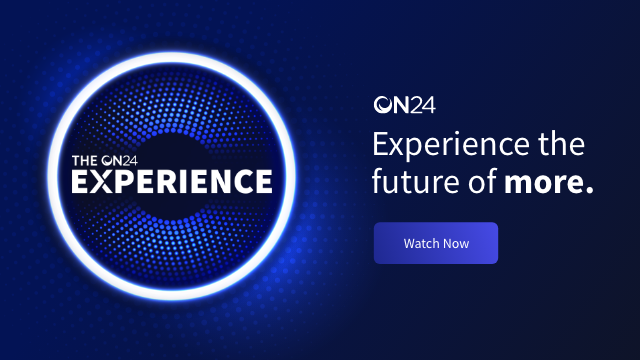The debate around digital fatigue really comes down to an age-old dilemma of nature vs nurture. Are audiences naturally turning away from digital channels or, are they being conditioned to tune out because of bad digital experiences?
Unfortunately, marketing tactics have not evolved with the digital age and those outdated tactics may be driving audiences away from digital.
This article was originally published on Modern Marketing Today. Shared here with the author’s permission.
Research from Stanford University says there are psychological consequences of spending hours using popular video chat applications and offers four reasons why these tools are driving fatigue – excessive amounts of close-up eye gaze, cognitive load, increased self-evaluation from staring at a video of oneself and constraints on physical mobility.
In other words, poor user experiences are driving fatigue.
Audiences are too often feeling lost or bored during digital experiences, leaving them no choice but to exit the browser. They are being conditioned to dislike marketing because they expect it to be bad and impersonal.
Compile that with already high levels of burnout among marketing professionals, and we begin to realize that if we want to engage these audiences, we will have to step up our game. Audiences now have a new standard of expectations from their digital events that marketers must deliver upon.
The good news is overcoming users’ digital fatigue is entirely within marketing’s control. Audiences no longer just sit passively and watch a screen or presentation. Marketers can design interactive, content-rich, fully branded experiences that transport audiences into another world that feels lightyears away from their last conference call.
Over the past few years, we’ve learned that audiences crave engagement.
According to our recent benchmarking report on digital engagement, audiences want a variety of ways to engage with content. More than 50% of survey respondents identified group chats, polls, and networking opportunities as engagement opportunities they would like to participate in during digital events. The survey also found that 70.4% of marketers are prioritizing engagement for future digital experiences.
We recently held our annual user conference, The ON24 Experience, and came away with some major learnings that support the need for more engaging digital experiences.
Our entire event strategy focused on the audience and their journey and creating an experience that would be the start of a campaign, like how you might launch a new product. Through that approach, we achieved higher engagement compared to the goals we set.
Here are three best practices we found to fight digital fatigue and put audience engagement at the center of your event strategy.
1. Customize for the user, not just the brand

Digital experiences are typically built around presentations. But having someone read from a slide deck during a digital event will no longer cut it with audiences’ post-COVID expectations for digital events.
To succeed, digital events have to offer multiple options for interacting with personalized digital experiences that capture people’s attention.
Digital experiences should also feel cohesive and give users a way to orchestrate their own experiences. By allowing users to choose their own adventure, they can more efficiently find the information they want, learn at their own pace, and ultimately get more from the experience.
For example, if users are looking for educational content, they should have a clearly defined path that allows them to learn about new products. Others might want to be entertained, so let them play games and win prizes within the experience.
Discover how to make your digital experiences exceptional with our tips for driving engagement. Click here to read.
Giving users a little bit of something they’re interested in not only delivers an experience customized for the user but also gives organizations more ways to capture insights about their audiences the more they engage.
The ON24 Experience included a host of customized experiences for conference attendees, including custom Wordles, a digital photo booth, an awards section and more. We also set up “fun lounges” with puppies, mindfulness, and meditation room options to keep the experience interactive ahead of the life after party.
The resulting engagement metrics exceeded our goals – event attendees’ average viewing time was 98.8 minutes in 2022, meaning that the average attendee was engaged for well over an hour and a half.
2. Build content to last and be reused

Marketers should plan and execute digital events as campaigns rather than one-time events. The key is to create event tracks with content mapped to your annual campaigns so it aligns with your larger goals and can be reused down the road.
Don’t let your digital event become a one-off. Every session should map customer pain points and use cases for your campaign. That way, presentations become a funnel that maps to your campaign pillars and allows you to drive engagement year-round.
When the content is oriented towards user needs and overarching campaign strategies, you’ll gain engagement insights that allow you to then map to specific segments and sales plays.
With this approach, marketers can leverage content long after the event ends, and audiences can continue interacting with your brand. And the more audiences engage, the more data marketers can capture, including who’s accessing your content, if those individuals had questions and their current pain points.
These insights improve the follow-up process post-event and drive those prospects down the sales funnel.
3. Engagement drives excitement – not fatigue

When digital experiences are orchestrated correctly, they can not only reduce digital fatigue but also drive better customer relationships. At The ON24 Experience, we saw the average number of locations per attendee increase 58% year-over-year by leveraging a custom-built platform – showing that multiple touchpoints for users produce more engagement, and better data too.
When marketers create thoughtful, multifaceted experiences for their audience, it makes users feel heard and creates two-way engagement – which is refreshing to otherwise digitally fatigued audiences.
But in order to create this type of meaningful engagement, digital events must give people an opportunity to explore and self-discover content within the experience. Therefore, marketers should design digital experiences so users can self-discover content and be engaged instead of fatigued.


